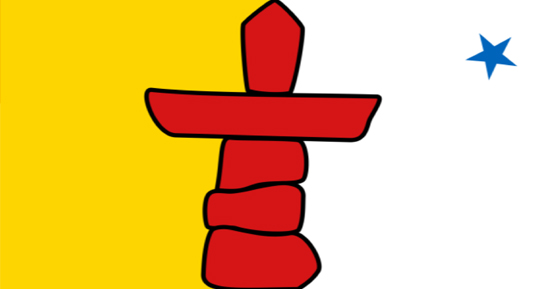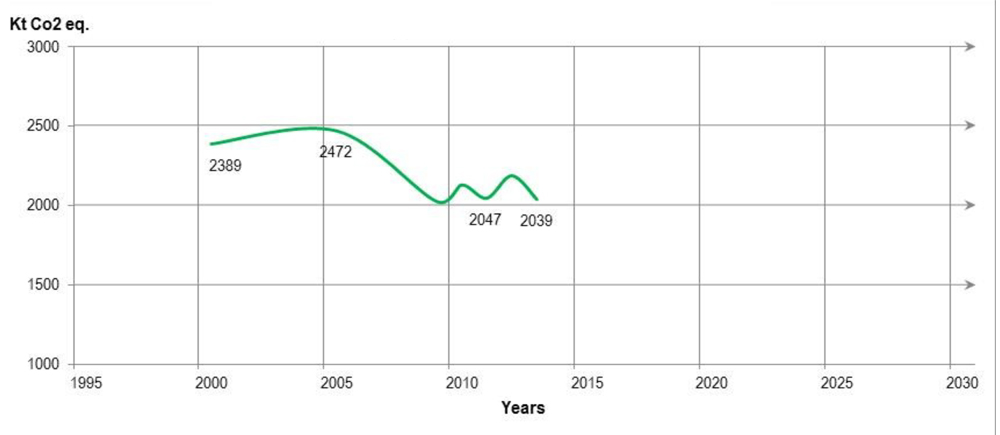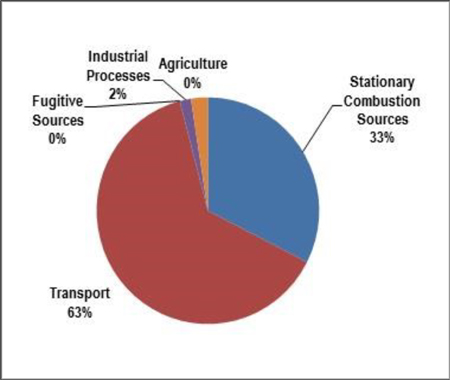Nunavut: Environment profile
Note
This information was current as of November 2015.

Nunavut (NU) in brief
- Premier:
- Hon. Peter Taptuna (Independent)
- Population:
- 36,600 (2014)
- Total Area:
-
2,093,190 km
2
- Land:
- 1,936,113 km 2
- Freshwater:
- 157,077 km 2
- Real GDP (gross domestic product) 2013:
- $2 billion (in 2007 dollars)
- Contribution to real Canadian GDP 2013:
- 0.1%
NU budget 2015-16
- Budgeted total expenditures:
- $1.7 billion
- Funds allocated to DoE:
-
$25.8 million
- 1.5% of total budget
- 7.3% increase over 2014-15
Key environmental federal-provincial agreements
- Nunavut Devolution (Agreement in Principle under negotiation)
- Nunavut Land Claims Agreement
- Inuit Impact and Benefits Agreement
Climate change
- Department responsible for climate change:
- Department of Environment
- Minister responsible for climate change:
- Hon. Johnny Mike
- Legislation and regulations:
- Nunavut Environment Protection Act; While there are no regulations identified, several guidelines (including on ambient air quality, used oil and waste fuel, operation of wood-burning appliances, and ozone depleting substances etc.) exist that are used to help ensure compliance with the Act.
Territory's Collectives GHG (greenhouse gas) emissions

Sources:
- National Inventory Report (2015)
Long description
Figure 1 is representative of all three territories’ (Nunavut, Yukon and Northwest Territories) collective GHG emissions. It presents a single time series line graph with the horizontal axis spanning the years 1995 to 2030 in five year increments. The vertical axis is Kt CO2 eq and spans the value of 1000 to 3000 in increments of 500. The starting value in 2001 is 2389 Kt, increasing to 2472 Kt in 2005. It declines to 2047 Kt in 2011 and 2039 Kt in 2013. The territorial 2020 and 2030 targets are not noted.
Territorial GHG emissions reduction target
Nunavut does not have a formal plan to reduce emissions but has developed energy efficiency targets for government and government-funded buildings.
NU's sources of GHG emissions, 2013

Source: National Inventory Report, 2015
Long description
Figure 2 presents a pie chart of the distribution of major greenhouse gas sources in Nunavut.
- Stationary combustion sources: 33%
- Transport: 63%
- Fugitive sources: 0%
- Industrial processes: 2%
- Agriculture: 0%
- Climate Change Strategies: Nunavut Climate Change Strategy (2003)
- Total NU Emissions, 2013: 221 Kt (Source: Environment Canada’s National Inventory Report, 2015)
- NU's Contribution to total Canadian GHG Emissions, 2013: 0.03%
- Ranked the lowest GHG emitter amongst Canadian provinces and territories in 2013
- GHG per Capita, 2012: 17.9 tonnes (all territories combined); ranked 5th highest GHG emitter per Capita, 2012
- The adaptation strategy Upagiaqtavut: Setting the Course was released in 2011 and provides a framework and strategic objectives for climate change adaptation in Nunavut.
- A Climate Change Centre was created in 2012 to assist the government in the implementation of the recommendations the adaptation strategy and provide information to the territory’s residents.
- In 2011, the Government of Nunavut, along with those of Yukon and the Northwest Territories, released the Pan-territorial Adaptation Strategy to ensure partnership, sharing of information, innovation, and technology, and coordination of climate change adaptation actions.
- From 2001 to 2005, the Nunavut government initiated Inuit Qaujimajatuqangit of Climate Change in Nunavut, a territory-wide examination of Inuit traditional knowledge through interviews to collect Inuit perspectives with respect to climate change.
Water
- Departments responsible for water:
- Aboriginal Affairs and Northern Development Canada (AANDC);
- Minister responsible for water:
- Hon. Johnny Mike
- Legislation and regulations:
- Nunavut Land Claims Agreement, Nunavut Waters and Nunavut Surface Rights Tribunal Act, Nunavut Waters and Surface Rights Tribunal Act
- Water Strategies: Policy Respecting the Prohibition of Bulk Water Removal from Major River Basins in Nunavut (AANDC policy)
- Water management in NU is the responsibility of Aboriginal Affairs and Northern Development Canada (AANDC) and the Nunavut Water Board.
- AANDC is involved in water management and planning activities. It also participates in regulatory activities, such as environmental assessment and water licencing, by reviewing applications, monitoring compliance, and providing recommendations and technical advice to the Nunavut Water Board and the Nunavut Impact Review Board.
- The Nunavut Water Board (NWB) was established under the Nunavut Land Claims Agreement in 1996 and is responsible for the use, management, and regulation of inland fresh water in Nunavut, except in national parks. The NWB contributes to the development of land use plans as they concern water in the Nunavut Settlement Area. It has an advisory function for marine areas and is also a member of the Nunavut Marine Council.
- Key water priorities include hydrometric monitoring, land use planning, infrastructure projects, and climate change impacts and adaptation.
EC and NU Collaboration on Water
- Hydrometric Monitoring Program
- Nunavut Impact Review Board
- Arctic Net Integrated Regional Impact Studies
- Municipal Wastewater Effluent Research
Biodiversity and wildlife
- Department responsible for biodiversity and wildlife:
- Department of Environment
- Minister responsible for biodiversity and wildlife:
- Hon. Johnny Mike
- Legislation:
- Nunavut Wildlife Act, Environmental Protection Act, Forest Management Act, Forest Protection Act, Territorial Parks Act
- Biodiversity and Conservation Strategies: Wildlife Management Program, Parks and Special Places Program
| Extirpated | Endangered | Threatened | Special Concern | |
|---|---|---|---|---|
| Total: 14 Source: Species at Risk Public Registry January 2015 |
0 | 4 | 2 | 8 |
- NU does not have a specific biodiversity strategy.
- The Parks and Special Places program designates and manages Nunavut’s territorial parks and special places, including protecting the biodiversity and integrity of NU’s natural and cultural heritage and landscape.
- The NU Department of Environment’s Wildlife Management Program is responsible for the management of terrestrial wildlife and develops management plans based on both scientific and traditional Inuit knowledge. Under the Nunavut Land Claims Agreement, wildlife is co-managed by the Nunavut Wildlife Management Board and the territorial (terrestrial wildlife and habitat) and federal (fish, marine mammals and habitat, and migratory birds) governments.
- Percentage of freshwater and land protected in NU: 10.0% (Source: Canadian Environment Sustainability Indicators, 2013)
- Environment Canada maintains 16 protected areas in NU, including 5 National Wildlife Areas and 8 Migratory Bird Sanctuaries, comprising over 10 million hectares of NU’s protected lands and waters.
- The largest protected area in Canada is located in NU – the Queen Maud Gulf Migratory Bird Sanctuary, which covers more than 6 million hectares of marine and terrestrial habitat.